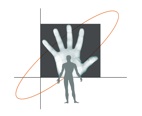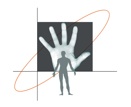THE ANATOMICAL WORKS
Manual Physical Therapy & Rehabilitation Center

THE ANATOMICAL WORKS
Manual Physical Therapy & Rehabilitation Center

Welcome to the Anatomical Works manual physical therapy Center
You may have heard of the Anatomical Works through friends, loved ones or a trusted health professional (physician, nurse practitioner, physical therapist, occupational therapist, chiropractor, acupuncturist or any other of the allied health professionals) or you may have stumbled upon us because of our reputation for successfully treating chronic/acute musculoskeletal and visceral(thoracic, abdominal and pelvic) pain.
Whether you are inquiring about treatment for ailments that may be troubling you or perhaps a loved one, feel free to check our website and inform yourself about the profound and overlooked manner in which manual physical therapy can help overcome these often debilitating conditions which seriously affect your function and quality of life. We encourage you to verify this and ask people in the community about us.
The Anatomical Works Manual Physical Therapy Center has pioneered the practice of manual therapy in the Greater New Orleans area as well as the Gulf Coast. Established by Bruno U.K. Steiner in 1992, the Anatomical Works center has vigorously promoted and dedicated itself to the practice and treatment method which has benefited so many. The proven and highly regarded methodology of manual physical therapy involves the treatment, rehabilitation of acute, chronic orthopedic and musculoskeletal injuries. Whether the condition is acute due to overuse or direct trauma or whether the condition is perpetual and chronic, a competent manual physical therapist can guide a patient to a successful recovery in a manner that a nonspecific exercise program cannot.
Manual therapies are not a recent innovation
The history of manual therapies date back into history to early human civilizations. Traditions of manual therapies have roots in ancient cultures that span the globe. On our continent, native tribes of North America such as the Sioux, Winnebagos, and the Creeks were well known to skillfully practice general bone setting. Across the Atlantic, spinal manipulation has been documented as far back as Hippocrates (460-355 B.C.). The ancient Egyptians and Asian cultures have also practiced manipulation through the ages by families of bone setters. Further east still, strong evidence also shows that the use of hands for the purpose of treatment was practiced in ancient Thailand at least 4000 years ago. Manual traditions have also been practiced throughout the Middle Ages in Europe and were regulated through special guilds.
According to Greenman DO ;
"There is a void in the report of the use of manual medicine procedures corresponding to the approximate time of the split of physicians and barber surgeons. As physicians became less involved in patient contact and as direct hands-on patient care became the province of the barber surgeons, the role of manual medicine in the healing art seems to have declined. This period also represents the time of the plagues, and perhaps physicians were reticent to come in close personal contact with their patients. The 19th century found a renaissance of interest in this field. Early in the 19th century, Dr. Edward Harrison, a 1784 graduate of Edinburgh University, developed a sizable reputation in London by using manual medicine procedures. Like many other proponents of manual medicine in the 19th century, he became alienated from his colleagues by his continued use of these procedures."
Principles of Manual Medicine, second edition, Philip E. Greenman DO, 1996
Through a complete physical musculoskeletal biomechanical assessment and evaluation, the very nature of the affliction may be uncovered to begin an appropriate course of manual physical therapeutic intervention, in order to get you or your loved one on the path of recovery. This not only involves the careful and skilled application of manual techniques coupled with specific therapeutic exercises and modalities, but involves a dedicated follow through and management style of your caring practitioner/manual physical therapist.
Far too often in the therapeutic process, the patient, whose condition appears perpetual and unending in its duration and intensity of pain, feels his or her musculoskeletal issues have not been adequately addressed and feel most questions remain unanswered. And with limited insurance dollars, it's probably a good idea to get on the right path with good, informed decisions.
To ensure an optimal recovery, it is absolutely crucial to understand how the injury occurred and the nature of the painful syndrome. It's essential to determine which structures have been injured and appreciate how these different structures or body parts heal. For instance, skin, bone, tendons, ligaments, cartilage, nerve repair and heal at different rates. Furthermore, these different tissues may be subject to different strains and forces during the recovery that might compromise or complicate their recovery. All these complications have to be navigated by the therapist and conveyed to the patient with great care to ensure the best possible outcome. And intuitively, we know that the greater the extent of the injury, the longer it will take. Some tissues can tolerate certain load forces, and some may not. Every injury, although similar in certain ways, must be treated specifically, for no two injuries are completely the same.
The manual physical therapist in addition to applying the appropriate technique, has the vital role of coaching a patient to self manage his or her recovery, so that one does not inadvertently hurt oneself further... but ultimately, how do you as a patient know what to do? Do you work through the pain? No pain no gain? Do you just ignore the pain? Do you get confused by all the anecdotal advice from concerned relatives and friends? Or do you put your hands over your ears and block out the suggestions of friends and family, in hopes that the pain will eventually go away?
Chances are, you may deal with the injury in an inappropriate manner. A lot of musculoskeletal and orthopedic conditions worsen unless dealt with appropriately.
Manual physical therapy is a wonderful way to address these musculoskeletal problems, whether you are an athlete, or someone who works in the garden or stuck at a desk, or recovering from a fall or accident... or someone who hasn't a clue why he or she has these types of pain.
Far from being anecdotally beneficial, evidence-based practice is showing that manual physical therapy approaches are proving to be of greater effectiveness than traditional exercise-only related therapies.
"Evidence-based" is a term you will likely hear more of. "Evidence-based" best practices are now needed in order to control spiraling health care costs, and is probably something all healthcare consumers should know about. We are all, of course, potential patients and healthcare consumers and we all should know whether certain procedures (therapeutic or surgical) have significant merit, upside or downside, benefit versus harm and of course side effects.
Thankfully, manual therapies applied with care, thoughtfulness, and specificity are not only highly effective but are also very forgiving techniques and have very little contraindications, especially in the realm of soft tissue manipulation, muscle energy technique, craniosacral technique and visceral manipulation.
"When appropriately used, manipulative procedures have been noted to be clinically effective in reducing pain within the musculoskeletal system, increasing the level of wellness of the patient, and helping patients with a myriad of disease processes."
Philip E. Greenman DO

To read specific diagnoses treated, please click to these links below:
